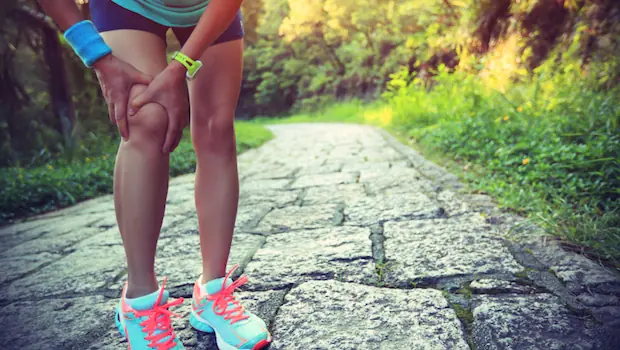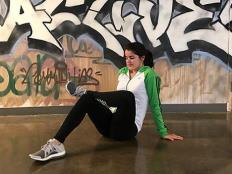
When knee pain strikes, popping a pill may be easy, but it's only a quick fix. These over-the-counter pain medications may be able to calm joint aches and swelling, but they have downsides that range from gastrointestinal distress to an increased risk of heart attack and stroke. (In fact, the FDA just strengthened the cardiovascular warnings on the bottles of ibuprofen and naproxen—yikes.)
Get off the pain-pill train by using one or more of these techniques—they're safe and effective.
More From Prevention: Can Ibuprofen Cause Hearing Loss?
1. Changing Your Routine
While knee pain shouldn't hold you back from the things you love, you may want to consider a short-term shift to your exercise regimen, says Long Island, New York—based physical therapist Annette Marshall Franey.
Try trading your usual walk or run for a pool workout or stationary cycling, which can be easier on the knees, says Franey. With the bike, be sure to choose an upright position rather than a bike that allows you to recline while you pedal. Adjust the seat so your knee is directly below your hip and your leg is almost straight at the bottom of the pedaling cycle, she says.
Yoga can help with knee pain, but certain poses—such as the warrior series—can put pressure on the joint if they aren't executed correctly: Make sure your knee doesn't drift inward during lunging positions. Also, let your instructor about your symptoms so he or she can watch you closely and provide modifications, advises Franey.
2. KT Tape
This thin, stretchy adhesive you can find at most pharmacies helps relieve pressure and inflammation, improves circulation, and provides support to the muscles surrounding the knee joint, says Holley J. DeShaw, LMT, a massage therapist in West Linn, Oregon, who works with elite, professional, and Olympic athletes.
Start with clean, dry skin, then check the manufacturer's website for instructions on exactly how to apply it for pain in your inner or outer knee or the back of your knee, or for full knee support. For a quick fix, pick up the new PRO-X patches ($19.99 on kttape.com). Simply place them on the point of achiness for targeted relief from muscle pain, overuse injuries, and tendon issues.
"They only take a moment to apply," DeShaw says, and they have the proper tension already built in.
3. Foam Rolling
If you haven't discovered the magic of rolling, your knee is telling you it's time: Using a foam roller is the newest way to improve flexibility and loosen tight muscles that can put pressure on your joint, says John Connolly, PT, DPT, CSCS, a physical therapist at Armonk Physical Therapy & Sports Training in Armonk, NY.
Rolling the outsides of your thighs—where the tough band of fibrous tissue called the IT band is located—can break down painful adhesions in this area, Connolly says. And rolling your quads or hamstrings can loosen these big muscles, which helps improve the tracking of your kneecap; when you walk or run, tight quads can pull your knee cap to the side with every stride, leading to the pain under the bone known as runner's knee.
4. Hip Strengthening
"The hip plays a big role in how the knee will function," Connolly says.
Building strength in your hips and glutes keeps your knees in proper alignment, and that takes pressure off the joints. In fact, in a recent study in the British Journal of Sports Medicine, knee rehab programs that included hip-focused moves provided better pain relief and improved motion.
Start with a move Connolly calls the clamshell: Lie on your side with your legs bent and a resistance band looped around your knees. Raise and lower your top leg 8 to 10 times, then change sides and repeat.
More From Prevention: Your 10 Biggest Walking Pains, Solved
- 1
- of
- 2
About the Author

Get ACTIVE on the Go


Couch to 5K®
The best way to get new runners off the couch and across the finish line of their first 5K.
Available for iOS | Android





Discuss This Article